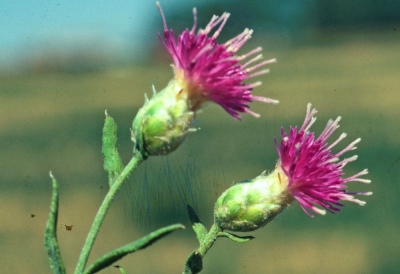Russian Knapweed Noxious Weed
Some weeds are easily mistaken for wildflowers, full of alluring blooms and attractive foliage. When large expanses of Russian knapweed are in full bloom, they do add lovely natural color to a landscape. But at last count, the noxious weed had taken over more than 132,000 acres of land in Colorado, crowding out native plants and taking over pastureland. Since the plant is toxic to horses, it’s not just a costly invader, it’s also potentially deadly.
Russian Knapweed Description
Russian knapweed starts life looking very weed-like. Its rosettes are similar to dandelion starts due to its long sawtooth leaves. Similarities end

The plant emerges in early spring with mostly vertical growth occurring May through June. Flowers are present summer through fall. Under the soil, Russian knapweed roots are spreading both down and across, forming a firm grip on the soil. It’s this aggressive hold, along with biochemicals that inhibit growth of nearby plants, that gives the weed its competitive edge.
The plant is an under-performer in seed production, with only 50 to 500 seeds per shoot. Considering many noxious weeds produce tens of thousands seeds (and sometimes twice a year), Russian knapweed is lucky to have time on its side. According to the Colorado State University Extension, stands of multiple plants have lived as long as 75 years. Even at just 50 seeds a year, a long-living plant can still be very fruitful.
If you have identified Russian knapweed on your property, SprayTech, Colorado noxious weed management experts, can help! Call them at 720-248-0000 for more information.

